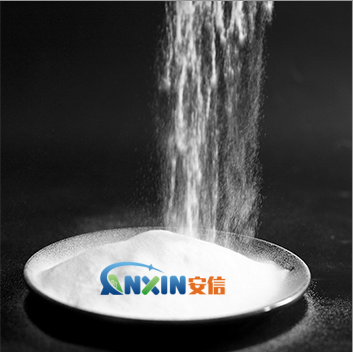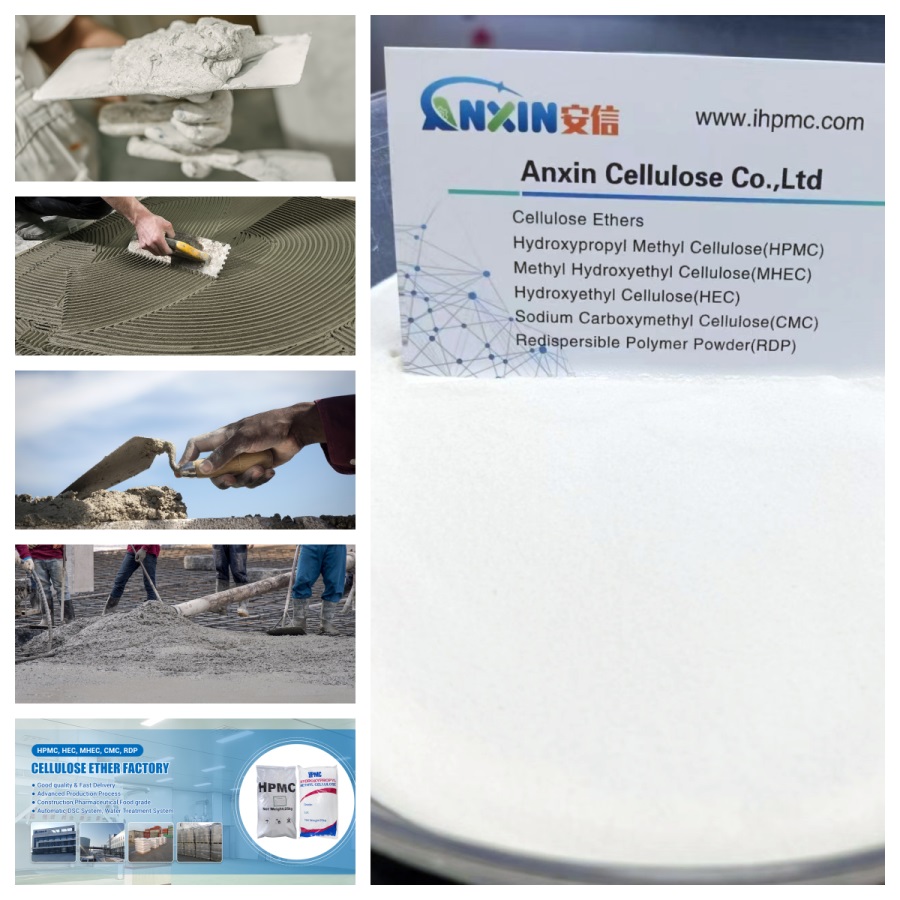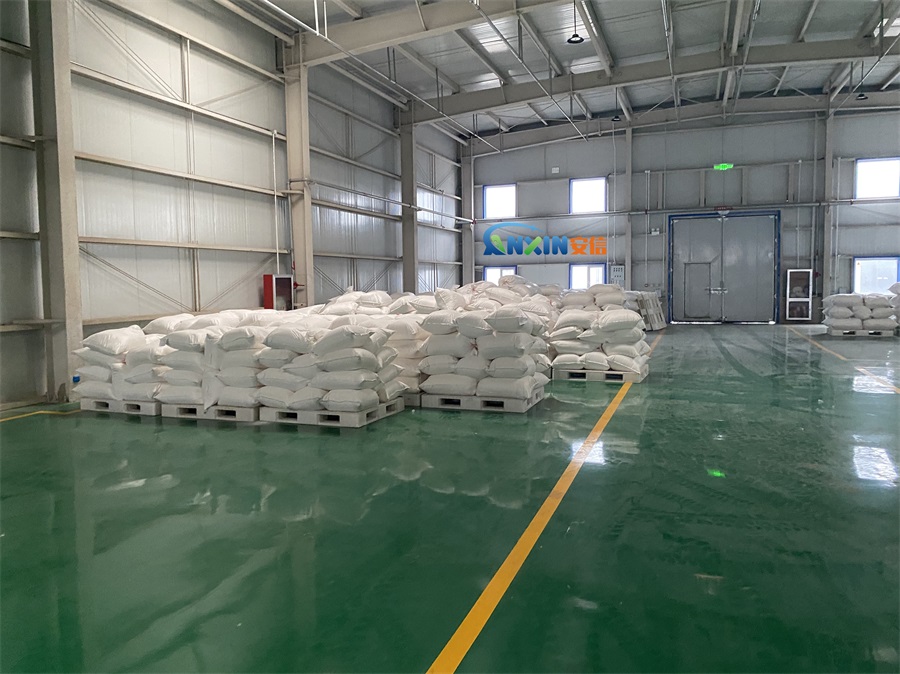Hydroxypropyl Methylcellulose (HPMC) is a water-soluble polymer derived from cellulose, a natural biopolymer. AnxinCel®HPMC is widely used in the construction industry, particularly in mortar and plaster formulations. Its primary role in these applications is to improve the water retention properties of mortar, which is essential for achieving optimal performance during both the mixing and application processes.
The Role of Water Retention in Mortar
Water retention in mortar refers to the ability of the mix to retain water after it is applied to a surface, allowing it to remain workable and hydrated during the setting and curing process. Proper water retention ensures the mortar can form a strong bond with the substrate and prevents issues such as cracking, shrinkage, or poor adhesion. Inadequate water retention can result in uneven curing, leading to weak mortar joints, reduced bonding strength, or premature hardening.

Water retention is especially critical for dry-mix mortars, which are pre-packaged blends of cement, sand, and additives. When mixed with water at the job site, these mortars must retain a sufficient amount of moisture to ensure adequate hydration of the cement particles, thereby achieving full strength and durability. In this context, HPMC plays a vital role in controlling water retention and enhancing the workability and performance of the mortar.
How HPMC Enhances Mortar Water Retention
Water-Solubility and Gel Formation: HPMC is a water-soluble polymer that forms a gel-like structure when mixed with water. This gel structure can encapsulate water molecules and reduce evaporation, thereby increasing the mortar’s water retention capacity. The gel prevents the mortar from drying out too quickly, maintaining the right level of moisture during the curing process.
Viscosity Control: The viscosity of the mortar mix is influenced by the presence of HPMC, which helps in stabilizing the mixture. By increasing the viscosity, HPMC ensures that the water is evenly distributed throughout the mix and helps prevent segregation of water and solid particles. This controlled viscosity not only improves the mortar’s water retention but also enhances its workability, making it easier to apply and spread.
Prevention of Premature Hardening: During the application of mortar, premature hardening can occur due to rapid water loss. HPMC helps to slow down this process by acting as a water-retaining agent. This ensures that the mortar remains moist for a longer period, allowing for better adhesion to surfaces and preventing cracks that may form due to uneven hydration.
Improved Adhesion: As HPMC enhances water retention, it ensures that there is a consistent level of moisture for the cement particles to properly hydrate and bond with the aggregates. This improved hydration results in a stronger bond between the mortar and the substrate, improving adhesion and overall performance. It is particularly beneficial when working with porous materials, such as brick or concrete, which tend to absorb moisture quickly.
Benefits of HPMC in Mortar
|
Benefit |
Description |
| Improved Water Retention | HPMC forms a gel that helps retain water in the mortar mix, preventing rapid drying and ensuring optimal hydration. |
| Enhanced Workability | The increase in viscosity improves the consistency of the mix, making it easier to apply, spread, and shape. |
| Reduced Shrinkage and Cracking | By preventing early evaporation of water, HPMC helps reduce the occurrence of cracks that can develop due to shrinkage. |
| Prevention of Segregation | HPMC helps to stabilize the mix by ensuring uniform distribution of water and aggregates, preventing separation. |
| Improved Adhesion and Bonding | The moisture retention provided by HPMC promotes better bonding between the mortar and the substrate, enhancing durability and strength. |
| Increased Open Time | Mortar containing HPMC remains workable for a longer period, allowing more time for adjustment and correction during application. |
| Enhanced Performance in Dry Climates | In areas with high evaporation rates, HPMC’s ability to retain water ensures that the mortar remains workable and does not dry out prematurely. |

Applications of HPMC in Mortar
HPMC is commonly used in various types of mortars, including:
Tile Adhesives: In tile setting mortars, HPMC improves water retention, ensuring proper hydration of the cement particles and enhancing the bond between the tile and the substrate.
Thin-Bed Mortars: Thin-bed mortars, typically used for tile installations, benefit from HPMC as it helps to maintain the right moisture balance for optimal bonding and setting.
Repair Mortars: For repairing cracks and damaged surfaces, HPMC enhances the water retention of repair mortars, allowing for better bonding with existing structures and preventing rapid drying.
Plaster and Stucco: In plastering applications, HPMC ensures that the mortar mix retains sufficient water for a smooth application and proper curing, especially in hot or dry conditions.
Dry-Mix Mortars: Pre-mixed mortar products, including those for bricklaying and general construction, benefit from HPMC’s water retention properties, which improve both the storage and performance of the product once it is rehydrated.
Factors Affecting the Efficacy of HPMC in Mortar
While HPMC offers significant benefits, its effectiveness in improving water retention can be influenced by several factors:
Concentration of HPMC: The amount of AnxinCel®HPMC used in the mortar mix directly affects its water retention properties. Too little HPMC may not provide sufficient water retention, while excessive amounts could negatively impact the mortar’s viscosity and workability.
Type and Grade of HPMC: Different types and grades of HPMC exist, each with varying degrees of viscosity, solubility, and gel-forming ability. Selecting the appropriate type of HPMC for a specific application is crucial to achieving the desired water retention and mortar performance.
Environmental Conditions: Mortar mixes with HPMC may behave differently in various environmental conditions. High temperatures or low humidity can increase evaporation rates, potentially reducing the effectiveness of HPMC in water retention. In such conditions, additional measures may be necessary to ensure proper hydration.

Compatibility with Other Additives: Mortar mixes often contain a variety of additives, including plasticizers, retarders, or accelerators. The interaction between HPMC and other ingredients must be considered to ensure that they work synergistically to enhance the mortar’s performance.
HPMC is a critical additive in mortar formulations, primarily due to its ability to improve water retention. By forming a gel structure that encapsulates water molecules, HPMC helps prevent premature drying, enhances the workability of the mix, and ensures better hydration of cement particles. These properties contribute to improved adhesion, reduced shrinkage, and enhanced durability of the mortar. The use of AnxinCel®HPMC is especially beneficial in environments with high evaporation rates or for applications requiring extended open time. Understanding the factors that influence the performance of HPMC and selecting the correct concentration and type for each application is essential for optimizing mortar performance.
Post time: Feb-21-2025